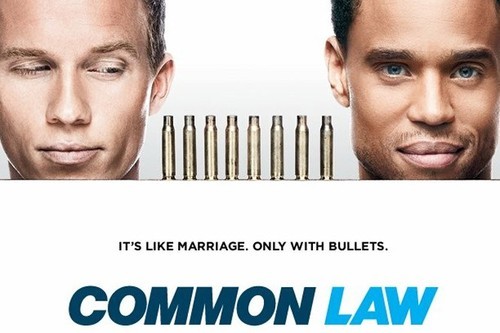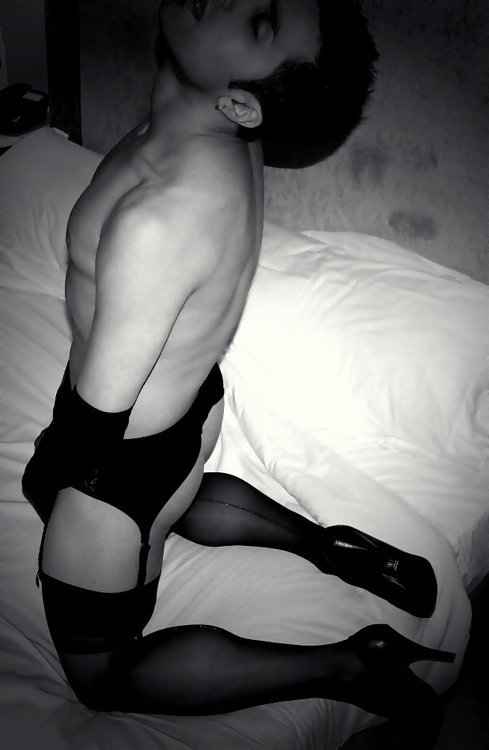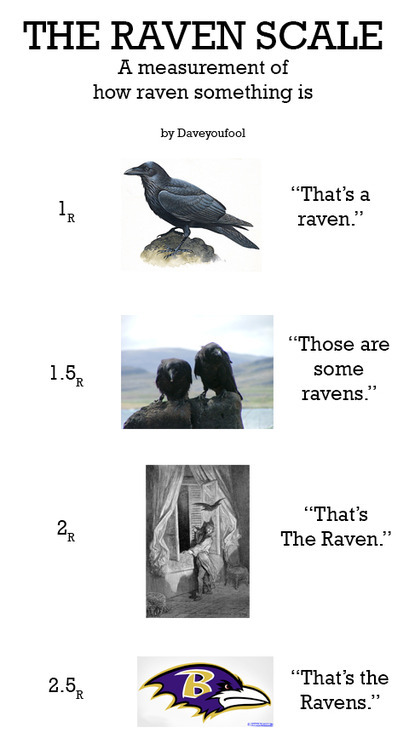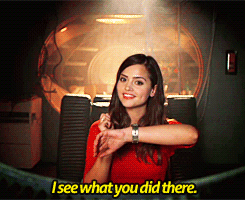raciallygendered:
A technique similar to the ‘gay vague’ technique used by advertising companies is known as ‘queer baiting.’ It has become increasingly common and noticeable in television shows as homosexuality gradually becomes less stigmatized—but the technique is perhaps even more sinister than the relatively harmless gay vague.
Queer baiting* occurs when two characters – “[most commonly] the two white cishet** dude bro protagonists” - are presented in a show as having chemistry. They are often mistaken as boyfriends, which is meant by the writers to create humor; “the joke is their obvious discomfort, because they could obviously never be gay.”
It’s like marriage … only without actual gay people.
Examples include BBC Sherlock, in which John Watson repeatedly insists that he is not gay (I’m not his date!), and USA network’s Common Law, (see above) featuring two straight cops who have to go to couples’ therapy (the title pretty much gives it away). MTV’s Teen Wolf released this video to excite fans of Sterek (Stiles and Derek), but in the canon of the show the characters are never remotely close to getting together for real (and then the writers pulled all this other crap, too). The problem also occurs in BBC’s Doctor Who (thanks to Steven Moffat, who is also one of the head writers for Sherlock) and in CW’s Supernatural (see below).
”Don’t worry Dean, it’s not gay if the writers say so!”
As TV critic Maureen Ryan of The Huffington Post points out,“It might have been funny, a long time ago, for two straight men to constantly fend off the suggestion that they are gay (though perhaps for GLBTQ people, these kinds of jokes were never all that funny),” but the cliché is overused and unhelpful to actual queer people.
This is subtext. But it OBVIOUSLY DOESN’T MEAN THEY’RE GAY I MEAN IF A STRAIGHT COUPLE DID THIS IT WOULD BE TOTALLY PLATONIC.
The unfortunate genius of queer baiting is that it gives TV networks the best of both worlds—they can appeal to gay audiences while never risking backlash because, if asked whether Characters A and B are really gay, they can always just flatly deny that making them gay was even their intention in the first place. That’s what the subtext is for! “[When] push comes to shove, the powers that be [the writers] never actually follow through … I mean, it’s not that kind of show.”
Nope, not a couple.
What makes queer baiting so dangerous and wrong is that it may seem, on the surface, like the queer representation the world so desperately needs. But it is fundamentally NOT, because just talking about queer subtext is nothing like actually having a queer couple on a TV show. It’s not representation. It just erases people who are actually gay—surprise! They actually exist!—and in actual relationships, not fake teasing ones dangled in front of fans’ faces. What the world needs is a show that will promise a queer relationship and then actually follow through and commit to an on-screen relationship between two non-heterosexual characters. Is that really so much to ask?
*of specifically gay characters. Even though gay is only a type of queer, other queer people are unfortunately rarely depicted in media (the term is erasure), so this blog post focuses on queer baiting in a gay context.
**cishet – cisgender, heterosexual
Sources
Ryan, Maureen. Common Law and TV’s Tired “We’re Not Gay” Cliche. The Huffington Post.
crowleyshouseparty on Regarding Queer Baiting: What it Is and What It is Not
Pop Culture is Not Art on Fangirl 101: Queer Baiting
orbitingasupernova (Cate) on Bisexuality in Doctor Who and the Queerbaiting Antics of Steven Moffat
crowleyshouseparty on How Teen Wolf Queer Baits: Stiles to Danny
Johnlock gif:
http://ift.tt/1sEKnvhvia:Tumblr
http://ift.tt/1qwxMwG


















